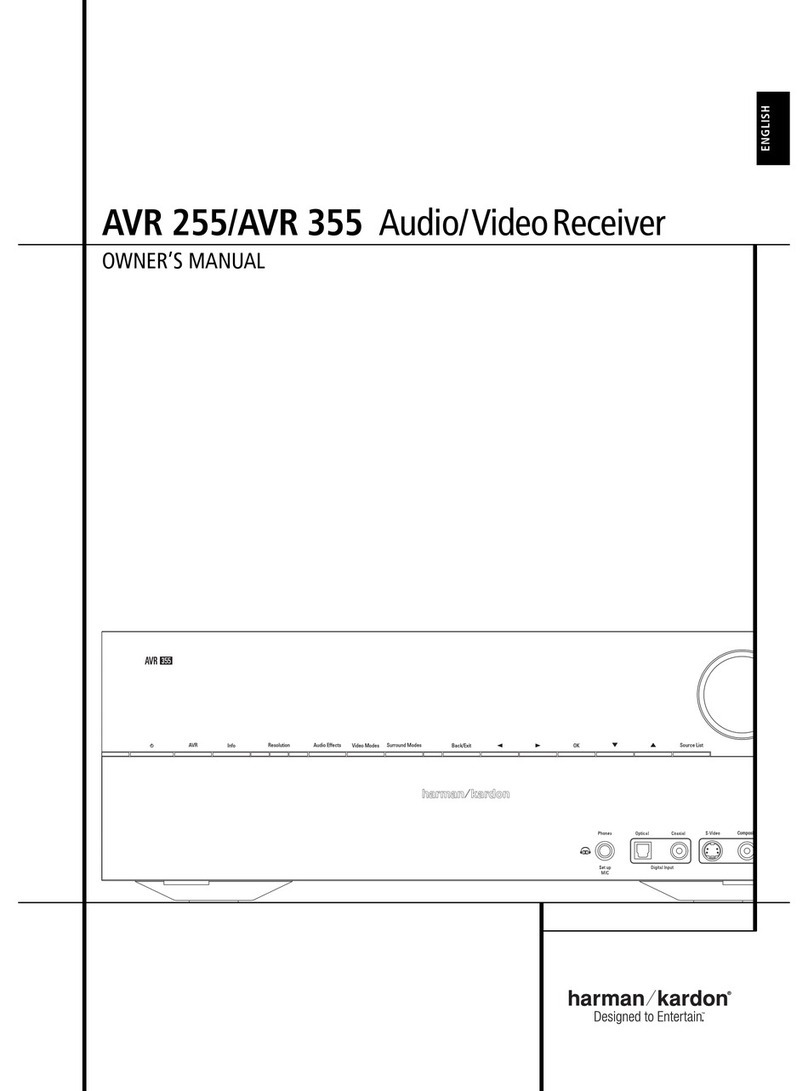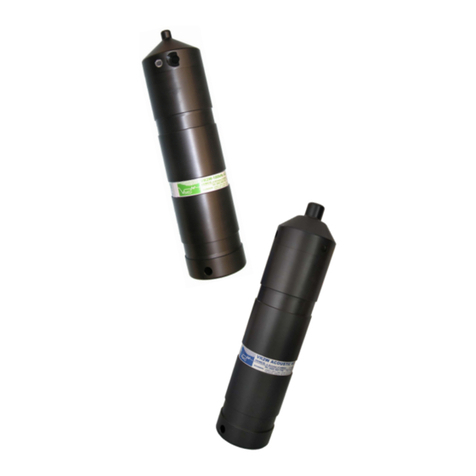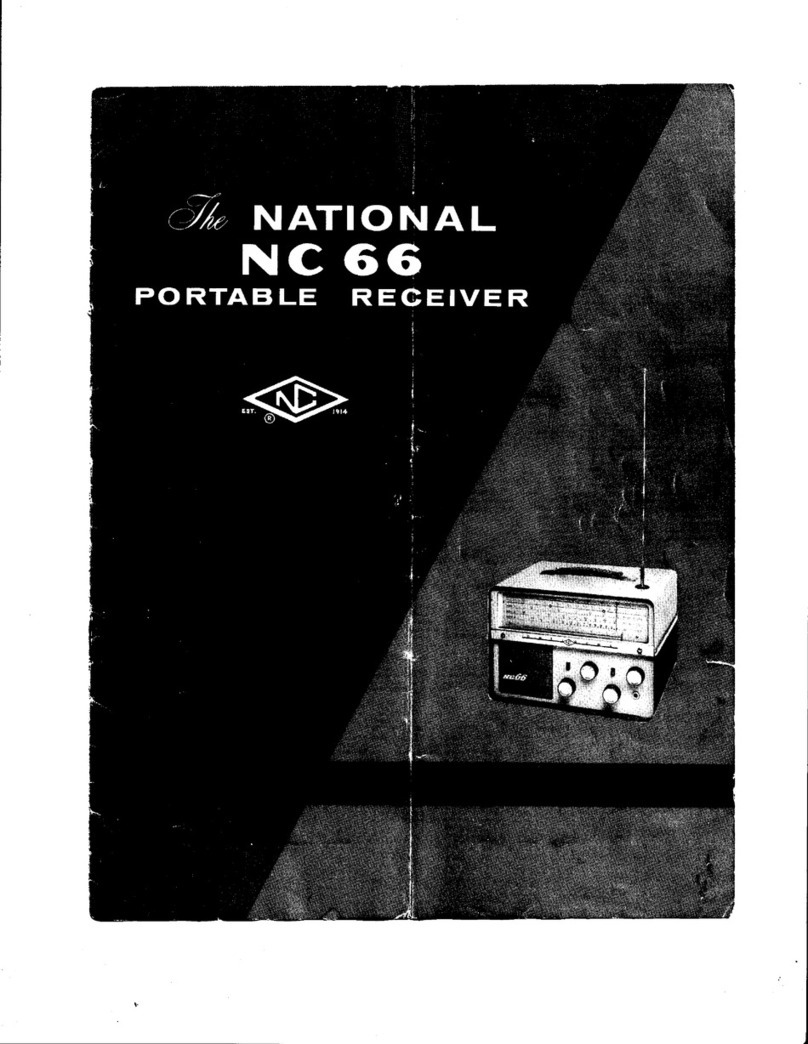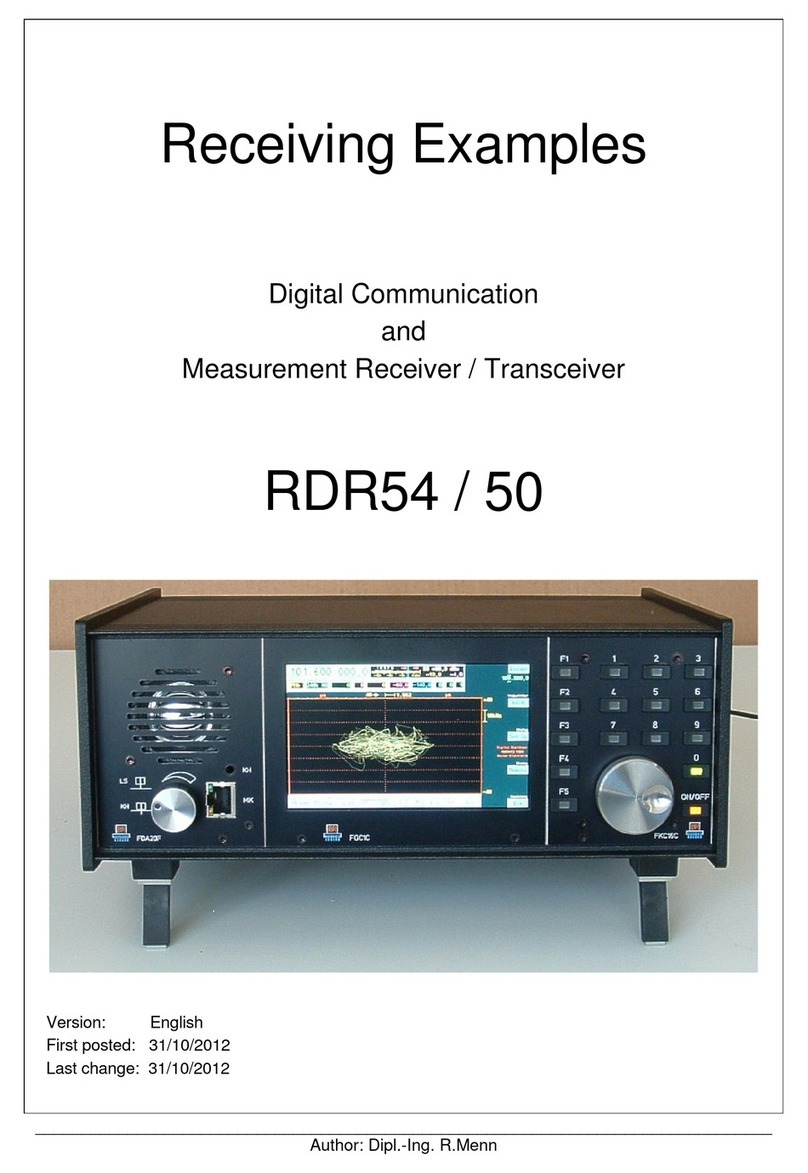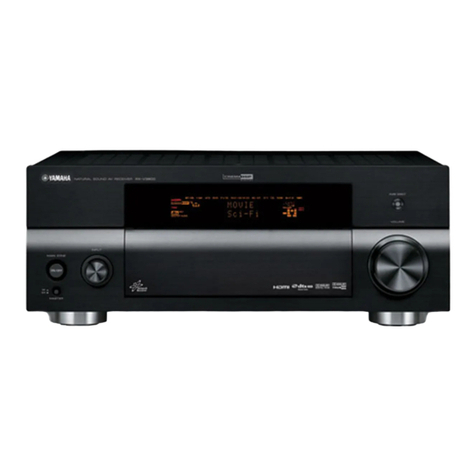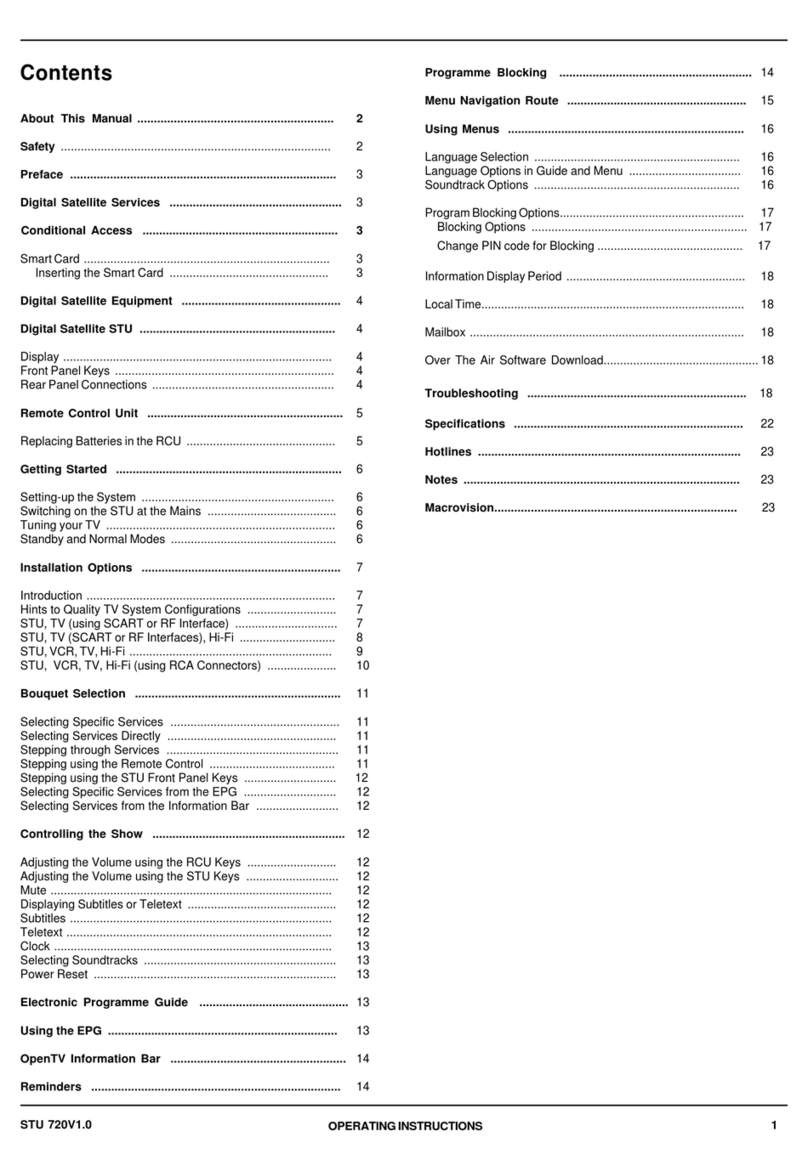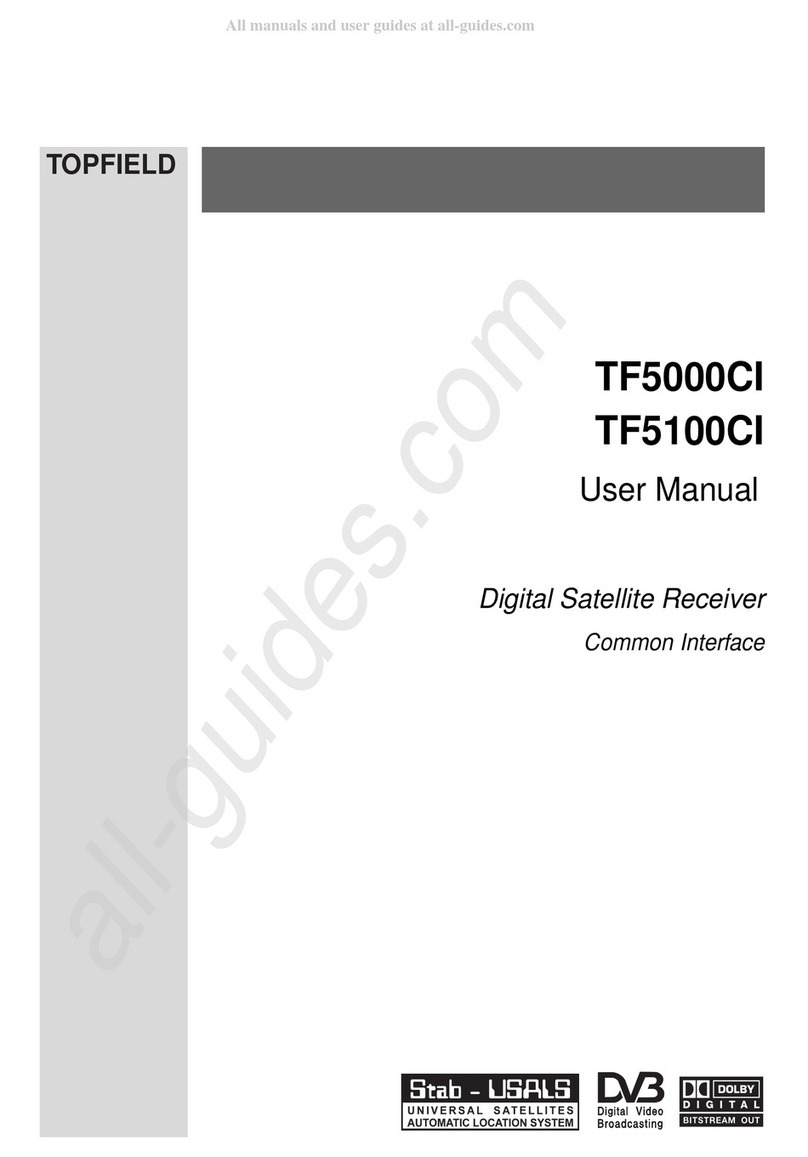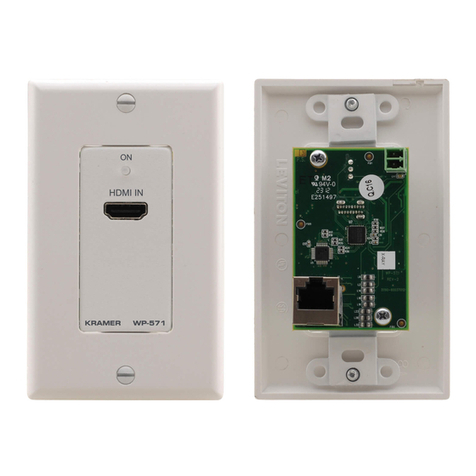telsiu altas START-S3XL User manual

START-S3XL
START-S3XL-R_180914_VXX06_GB www.ebtechnology.it www.nologo.info
Universal control unit for 1 sliding gate or up-and-over door.
Motor, 3levels of slow down. Inputs: start-timer- clock, photocell during closing,
limit switch during opening and closing, partial opening, stop.
Time acquisition “real-time”.
Radio receiver
-1-
-2-
-3-
-4-
-5-
-6-
-7-
-8-
-9-
-10-
-11-
-12-
-13-
-14-
-15-
-16-
-17-
-18-
-19-
230 Vac
230 Vac
Lamp
Lamp
MOT common
MOT close
MOT open
+ Antenna
Com 1 and - Antenna
Com 2 / - 12/24Vdc
+ 12 Vdc
STOP
FOTO
LSO
LSC
START
Pedestrian
24 Vac
+ 24 Vac/dc
-20-
-21-
Light-Fototest
Light-Fototest
-22-
-23-
Mechanical edge - NC
Mechanical edge - NC
*Connect this point to the terminal board no.
21 for the photo-test, otherwise connect it to
the terminal board no. 19
Photocells working
in closing
Lamp or courtesy light
230 Vac
If the input SAFETY-EDGE
is not used, make a link (22-23)
MOP
CL
COM
*
N.C.
C
N.C. N.C. N.A. N.A.
100%
ITALY
24 V OUT24 V
TX RX

START-S3XL Technical Manual
Foreword
need to familiarize yourself with and correctly operate
your unit. Read it very carefully when you purchase the
instrument and consult it whenever you have doubts
regarding use and before performing any maintenance
operations. Nologo has the right to modify the product
without previous notice.
Environmental protection
measures
Information regarding the environment for
customers within the European Union. Eu-
ropean Directive EC 2002/96 requires that
units bearing this symbol on the unit and/or
on the packaging be disposed of separately
from undifferentiated urban wastes.
The symbol indicates that the product must not be dis-
posed of with the normal household wastes. The owner
is responsible for disposing of this product and other
waste collection facilities indicated by the government
or local public agencies. Correct disposal and recycling
help prevent any potentially negative impact on the en-
vironment and human health. To receive more detailed
information regarding disposal of your unit, we recom-
mend that you contact the competent public agencies,
the waste collection.
Index
Par. Description Pag.
1 Introduction 3
1.1 Product description
1.2 Field of application
1.3 Type of installation
1.4 Technical features
2 Installation 4
2.1 Diagram of the control unit and electrical connections
2.2 Description of the electrical connection 5
2.3 Connection of the FLASHING LIGHT 230 Vac 6
2.4 Connection of one 24V gate open and moving LIGHT
2.5 Connection of the COURTESY light
2.6 Power supply of the accessories
2.7 Connection of the STOP/ALT control devices 7
2.8 Connection of LIMIT SWITCHES LSO and LSC
2.9 Connection of the MAGNETIC LIMIT SWITCHES
2.10 Connection of the 24 Vac photocell 8
2.11 Connection of the 24 Vdc photocell
2.12 Connect the 3 wires photo-beam 9
2.13 Connection of the “START” and “PEDESTRIAN” commands
2.14 Checking connections
3 Operating logic for DIP 10
4 Management of Remote control
4.1 Activation of the radio receiver
4.2 DELETING the codes memory 16
4.3 Remote control LEARNING
5 Turning on and programming the unit 12
5.1 Learning “START” OPENING COMMAND times 13
5.2 Times learning with the “PEDESTRIAN” COMMAND 14
5.3 Regulating of the MOTOR FORCE
5.4 Increasing the PAUSE time 15
5.5 RESET of the CONSTRUCTION SETTING UP
6 Problems solution
7 Declaration of CE conformity 16
Symbols and warning
DANGEROUS
This is a warning and if it is not re-
spec it can provoque material dam-
age.
DEVICE UNDER TENSION
The installation should be done
only from professional installer.
READ CAREFULLY THE
OPERATING MANUAL
Read carefully this manul before in-
stallation and keep it for the future.
-2-

START-S3XL Technical Manual
declines any responsibility for damages due to inappropriate use of the product and due to any use other than the
use the product was designed for. The producer declines any responsibility for consequential damages except civil
liability for the products.
1.1 Safety precautions
1 Introduction
The START-S3XL electronic control unit is used to control the movement of entrances, swinging gateways, rolling
gates and automatic doors. It can be connected to a hydraulic or electromechanical actuator equipped with an
asynchronous, single-phase motor operating at a voltage of 230 Vac.
1.2 Field of application
1.3 Type of installation
These two simple diagrams show only one of the possible applications for this control unit. The risks inherent to
the “MACHINE” and the user’s requirements must be analyzed in depth in order to establish how many elements
need to be installed. All photocells have a system of synchronism that makes it possible to eliminate interference
between two pairs of photocells (for other details, see the instructions for the photocells). In the diagram, the pair of
photocells “Photo A” (considered in this control unit) has no effect during opening while it causes a total inversion
during closing. “Photo A2” is connected in series to “Photo A”.
Application on sliding automation Application on swinging automation
FOTO A
FOTO A
FOTO A2
We recommend to install a STOP switch which stops immediatelly the gate. The switch has a normally close contact
which opens the contact when it is working. See Par. 2.7
Dimensions 87 x 126 x 40 mm
Weight 0.46 Kg
MAX power of single motor 1
750
4
HP
W
A
MAX power of signal light 230 Vac 40 W
MAX absorption with clean contact 2 A
MAX absorption 24 Vac/dc 300 mA
MAX absorption 12 Vdc 50 mA
1.4 Technical features
-3-

START-S3XL Technical Manual
1 2 control unit power supply 230Vac
3 7
8 19 power supply voltage to accessories and to
service and safety inputs
20 21 “clean” contacts for light or photocell TEST
22 23 stop coast input + inversion for 1.5 sec
JUMPER
AC/DC
output power supply selection 24Vac
or 24Vdc on terminals 18 and 19
JUMPER
J-R activation or deactivation of the radio receiver
DIP 1-10 function of the control unit
DIP 11-12 deceleration rate or deceleration excluded
selection
Button Pmanages wireless codes, regulates force,
increases pause time
2.1 Diagram of the control unit and electrical connections
2 Installation
Connection of the VOLTAGE line
230 Volt Single-phase alternate current.
The control unit power supply line must
always be protected with a magnetother-
mal switch or a pair of 5A fuses.
A differential switch is recommended but
not indispensable if one is already installed
on the plant.
Connection of the MOTOR
Pay particular attention not to invert
the OPEN and CLOSE poles.
When in doubt as to the correct connection, if
possible, manually position the automation at the
midpoint of its stroke. Be ready to stop the system
using the STOP control!
To be sure that the opening is really “opening”, try
to block the photocells: if the gate begins to close,
the connection is incorrect and the motor OPEN
and CLOSE wires must be inverted.
-4-

START-S3XL Technical Manual
-5-
2.2 Description of the electrical connection
230 Vac 1 Electrical power supply 230 Vac 50 Hz
230 Vac 2 Electrical power supply 230 Vac 50 Hz
Lamp 3
the lamp 100W.
4
MOT common 5 Output for connection of COMMON motor pole
MOT close 6 Output for connection of CLOSING motor pole
MOT open 7 Output for connection of OPENING motor pole
Antenna 8 Input for antenna signal (end of antenna hot wire)
Common 1 9Common for all inputs:
services, safety devices, coaxial antenna braid
Com2 / -12Vdc 10 Output -12/24 Vdc (See Phar. 2.6), Common 2
+ 12Vdc 11 Output +12 Vdc maximumcurrent 50mA (positive)
Stop12 STOP input
Foto 13 Input for photocell
(PHOTO safety trips only when closing)
Lso 14 Input for opening limit switch
Lsc 15 Input for closing limit switch
Start 16 Input for stepped START
Pedestrian 17 Input for stepped control of partial PEDESTRIAN opening
(same setting as START)
24Vac 18 Output 24Vac (See Phar. 2.6)
+24Vdc / 24Vac 19 Output + 24Vdc, 24Vac (See Phar. 2.6)
C. Light 20 “clean” contacts for light or photocell TEST
C. Light 21
Alt 22 NC stop coast + inversion for 1.5 seconds
Alt 23

START-S3XL Technical Manual
-6-
2.3 Connection of the FLASHING LIGHT 230 Vac
Flashing light complete
with intermittence circuit board
Flashing light complete without intermittence circuit board
DIP 4 - ON
ON
2
143 5
If you plan to use the photocells test,
or a 24V light, this connection cannot be used.
!
2.4 Connection of one 24V gate open and moving LIGHT
DIP 10
ON Fix Light
ON
CTS
2
143 6
587 10
91211
If you plan to use the photocells test, or a
24V light, this connection cannot be used.
!
2.5 Connection of the COURTESY light
LIGHT
230 Vac
DIP 4 - OFF
ON
CTS
2
143 6
587 10
91211
17 18 19 20 21
3 4 5 3 4 5 20 21
3 4 5
2.6 Power supply of the ACCESSORIES
Terminal board 10 (-) / 11 (+)
Voltage: 12 Vdc
Maximum current: 50 mA
Put JUMPER
JAC/DC as shown
in the picture
Terminal board 10 (-) / 19 (+)
Voltage: 24 Vdc
Maximum current: 300 mA
8 9 10 11 12 13 14 15 16 17 18 19
Terminal board 18 / 19
Voltage: 24 Vac
Maximum current: 300 mA
Put JUMPER
JAC/DC as shown
in the picture
+
-
-+
!!
AC DC
AC DC

START-S3XL Technical Manual
-7-
8 9 10 11 12 13
2.7 Connection of the STOP/ALT control devices
Connection of the STOP control
Push-button: stops and temporarily prevents all
control unit function until it is pressed again.
Switch: keeps the automation blocked until it is
reset.
Connection of the ALT control
Stops the automation and activates an inversion of
direction for approximately 1.5 seconds.
Connection of the safety devices requires the use of any push-button or N.C. (normally closed) contact.
When there are several safety devices, they are connected in series.
NOLOGO
If the STOP input is
NOT used put the
DIP 5 on ON.
If the input
SAFETY-EDGE
is not used,
make a link (22-23)
!
2.8 Connection of LIMIT SWITCHES LSO and LSC
switches, however, on this control unit they can also
be used individually. Therefore, it is possible to use
just the “Open limit switch” or just the “Close limit
switch”.
The limit switch contacts must be N.C.
(normally closed) contacts.
If the LSO or LSC inputs
aren’t in use, follow the
instructions you fi nd
in chapter n. 3
!
2.9 Connection of the MAGNETIC LIMIT SWITCHES
JUMPER AC/DC
Power Supply
magnetic limit
switches
+ 24 Vdc
Bring JUMPER
AC/DC as shown
in the picture.
22 23
8 9 10 11 12 13 14 15 16 17 18 19
8 9 10 11 12 13 14 15 16 17 18 19
OPEN
N.C.
CLOSE
N.C.
LIMIT
SWITCHES
OPEN
N.C.
CLOSE
N.C.
LIMIT
SWITCHES

START-S3XL Technical Manual
-8-
The photocell receiver con-
tact must be:
- clean
(insulated from power sup-
ply voltages)
- type N.C.
(Normally closed)
If more than one pair of pho-
tocells is used, they must be
connected in series.
The photocell TEST ensures that the automation only functions when the pho-
tocells are functioning properly. In fact, the control unit performs the test before
lights on for 5 seconds and the automation does not start.
The control unit automatically activates the test only after the START com-
mand times have been learnt. If you wish to return to the LIGHT function
on terminals 20 and 21, the photocells must be connected without the test
and then you must repeat the times learning operation with the START com-
mand.
The TEST function is compatible with lower devices (for example TRANSCEI-
VER) so the gate can have a delay when opening. The TEST can be done also
from some devices in the INPUT COSTA (safety edge) and STOP.
After the TEST connections, memorize the working time for the START control
during this time the control unit check the devices which should are connected to
the TEST.
2.10 Connection of the 24 Vac photocell
RX TX
NC Contact
TX
20 21
Without TEST With TEST
2.11 Connection of the 24 Vdc photocell
8 9 10 11 12 13 14 15 16 17 18 19
24 Vac
RX
NC Contact
8 9 10 11 12 13 14 15 16 17 18 19
24 Vac
RX TX
NC Contact
TX
20 21
Without TEST With TEST
8 9 10 11 12 13 14 15 16 17 18 19
24 Vdc
8 9 10 11 12 13 14 15 16 17 18 19
+
-
RX
NC Contact
24 Vdc +
-
AC DC
Put
JUMPER
JAC/DC
as shown in
the picture
Put
JUMPER
JAC/DC
as shown in
the picture
AC DC
If the STOP input is NOT
used put the DIP 6 on ON.
!

START-S3XL Technical Manual
-9-
2.13 Connection of the “START” and “PEDESTRIAN” commands
The PEDESTRIAN opening command can be connected to any push-
button or N.O. (normally open) contact. If several devices are used,
they must be connected.
Using terminals 9 and 16 it is possible connect a TIMER to program
gate opening. The timer contact must be an NO (normally open) con-
tact and must remain closed for as long as the gate remains open.
If an opening command is connected to terminal 16, it must be con-
nected in parallel.
The START opening command can be connected to
any push-button or N.O. (normally open) contact.
2.12 Connect the 3 WIRES PHOTO-BEAM
POWER SUPPLY
TX PHOTOCELL
POWER SUPPLY
RX PHOTOCELL +
-
+
-
Photocell receiver.
N.C. contact terminals
-+
Bring JUMPER AC/DC
as shown in the picture
Voltage: 24 Vdc
Maximum current: 300 mA
that the internal microprocessor is on and awaiting a command. When the control unit is powered, the warning
lights, set on the inputs, are ON when the contacts on the inputs are closed toward the common:
Normally the red lights on inputs STOP - PHOTO - LSO - LSC - STOP - ALT are ON
Normally the green lights on the control inputs START - PEDESTRIAN are OFF
STOP PHOTO LSO LSC START PED ALT
Safety edge
2.14 Checking connections
8 9 10 11 12 13 14 15 16 17 18 19
8 9 10 11 12 13 14 15 16 17 18 19
Table of contents
